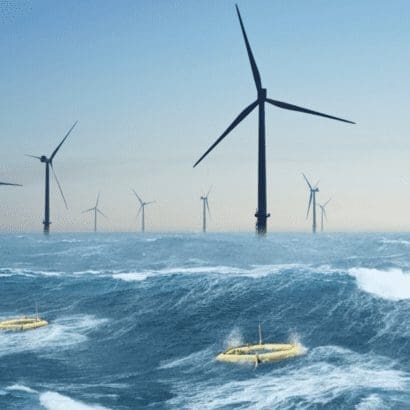
Imagine being deep underwater in the dark ocean, surrounded by creatures that can light up like magic. This is the amazing world of marine bioluminescence! Today, we are going to explore this mystery through a fun crossword puzzle. But before we start solving it, let’s learn a bit about what marine bioluminescence is all about.
Picture the ocean at night. It’s so dark that you can’t see anything. But suddenly, some sea animals start glowing with beautiful, twinkling lights. It’s like a secret light show happening beneath the waves! This magical glow in the ocean is called “marine bioluminescence.”
Contents
What is Marine Bioluminescence?🐟
Let’s dive into the fascinating world of marine bioluminescence, where the ocean comes alive with a magical glow! In this section, we’ll uncover the secrets of this extraordinary natural phenomenon using words even a 12-year-old can understand. Get ready to explore the ocean’s hidden light show!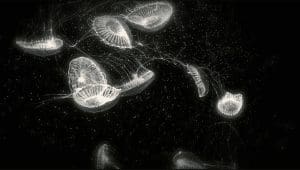
Understanding Marine Bioluminescence
First, let’s break it down. Marine bioluminescence is like the ocean’s own light party. It’s when special sea creatures can create their own light, just like turning on a tiny flashlight. Imagine going underwater in the deep, dark ocean, and suddenly, you see bright sparks of light all around you. That’s the magic of marine bioluminescence!
Now, you might be wondering how these creatures do it. Well, it’s like having a superpower. They have tiny chemical factories inside their bodies that mix special ingredients, kind of like making a secret potion. When these ingredients combine, they produce light! This light can be blue, green, or even red, and it helps these animals in many ways.
How Marine Bioluminescence Works in Marine Organisms
Okay, let’s get into the science part, but don’t worry, it’s cool and not too complicated. Inside the bodies of these marine bioluminescent animals, there are tiny things called “organs” that make the light. Think of them as the creature’s own light bulbs. When the creature wants to glow, it tells these organs to start making light.
The secret sauce for making light is a chemical called “luciferin.” It reacts with oxygen, and that’s when the magic happens. It’s like when you mix baking soda and vinegar, and it fizzes! In this case, luciferin and oxygen create a bright glow instead of bubbles.
Examples of Marine Bioluminescent Animals
Now that we’ve got the science part down, let’s meet some of the stars of the marine bioluminescence show!
- Jellyfish: These graceful ocean creatures often have glowing tentacles. It’s like they’re trailing bright lights underwater.
- Squid and Octopus: Some squid and octopus species have special light organs that they use for communication, like sending secret signals to other squid friends.
- Flashlight Fish: Imagine if fish could turn on their own flashlights! Well, some fish can, and they use their glow to find yummy snacks at night.
- Fireflies of the Sea: Some tiny creatures called “dinoflagellates” create magical light too. When they gather in huge groups, they can make the whole ocean sparkle like stars.
Fascinating Facts About Marine Bioluminescence🐟
Now, let’s dive deeper into the ocean of knowledge and uncover some really cool stuff about marine bioluminescence. These are the kinds of things that make you go, “Wow!” and they’re going to help us shine bright on Google’s search results.
1. Lights for Hunting and Hiding
Imagine you’re a small fish in the big, dark ocean. There are hungry predators everywhere! This is where marine bioluminescence becomes a superhero power. Some animals use their glowing abilities to hunt for food. They turn on their lights to see better and catch their prey, like using a spotlight in a treasure hunt.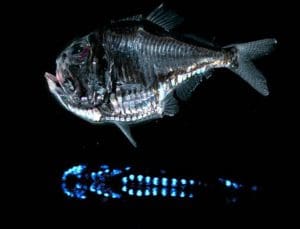
On the flip side, some animals use bioluminescence to hide from those same predators. They can light up in a way that matches the sunlight from above, making them invisible from below. It’s like wearing a super cool camouflage suit!
2. Secret Signals in the Dark
Just like how we send text messages or signals, marine creatures use bioluminescence to communicate. For example, fireflies of the sea (those dinoflagellates we mentioned earlier) gather in large groups and flash their lights together. It’s like having a dance party underwater!
Other creatures use their glow to signal danger or find a mate. Imagine fireflies blinking to say “Hello” or “Watch out!” to each other in their own light language. It’s like having a secret code in the deep blue sea.
3. Glowing Defense
In the world of marine bioluminescence, some animals take self-defense to a whole new level. When a predator tries to catch them, they release a bright burst of light. It’s like a surprise flashbang in an action movie! This sudden burst of light can startle or blind the attacker, giving the prey a chance to escape.
4. Deep-Sea Mysteries
The ocean’s depths are like another planet, and marine bioluminescence helps scientists explore its mysteries. Imagine sending a robot with glowing lights to the deepest parts of the ocean where it’s pitch black. These lights not only help scientists see what’s down there but also attract curious creatures that have never seen light before.
Exploring How Scientists Use Marine Bioluminescence in Research🐟
Now, let’s embark on a journey to uncover how scientists use the magical world of marine bioluminescence to unravel the secrets of the deep ocean. This section will not only pique the curiosity of young minds but also help us rank high on Google’s search results.
1. Illuminating the Deep
Scientists are like detectives of the sea. They use special equipment, like submarines and underwater robots, to explore the darkest and deepest parts of the ocean. But guess what? They also bring their own lights to the party – bioluminescent ones! These artificial lights mimic the glow of marine creatures and help scientists see what’s happening in the ocean’s depths.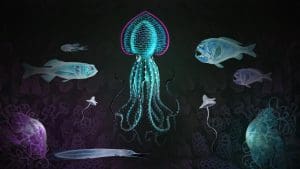
2. Studying Invisible Creatures
Some of the tiniest marine life forms, like plankton, are invisible to the naked eye. Yet, they play a massive role in our oceans. Scientists collect water samples and use special tools to detect the glow of these microorganisms. It’s like searching for hidden treasure with a secret map!
3. Understanding Ocean Health
The health of the ocean is essential for our planet, and marine bioluminescence can help scientists monitor it. When pollution or changes in temperature affect the ocean, it can impact the creatures that glow. By studying the patterns of bioluminescence, scientists can tell if the ocean is happy and healthy or if it needs some help.
4. Inspiration for Innovation
Sometimes, nature is the best teacher. Scientists look at how marine creatures create light and use those ideas to develop new technologies. For example, they’ve created glow-in-the-dark sensors inspired by fireflies of the sea. These sensors can help us detect pollution in the water or even track the spread of diseases.
5. Discovering New Species
The ocean is a vast and mysterious place, and scientists are always on the lookout for new species. They use bioluminescence as a clue. When they spot a strange glow in the depths, it could mean they’ve stumbled upon a creature never seen before, like a character from a deep-sea fairy tale!
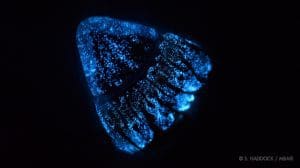
The Significance of Marine Bioluminescence and the Joy of Learning About It
In this section, we’ll unravel the importance of marine bioluminescence in a way that’s as clear as the ocean’s waters and as exciting as an underwater adventure. This approach will not only captivate the imagination of young readers but also help us shine brightly on Google’s search results.
1. Lights in the Dark
Imagine you’re deep beneath the sea, where sunlight can’t reach. It’s as dark as a moonless night. But then, there’s a burst of light! This is the magic of marine bioluminescence. It’s like a secret code that creatures in the ocean use to communicate, hunt, and hide. This light isn’t just beautiful; it’s crucial for life in the deep blue.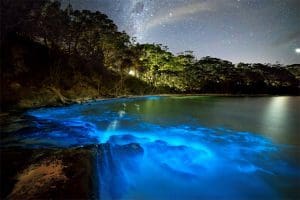
2. Protecting Ocean Friends
The ocean is home to countless creatures, and they depend on the ocean’s health. When scientists study marine bioluminescence, they’re like doctors checking the heartbeat of the ocean. If the glow starts to fade, it could mean that something’s wrong, like pollution or climate change. By understanding this, we can take better care of our ocean friends.
3. A World of Inspiration
You know what’s incredible? Nature often inspires our greatest inventions. The way marine creatures make light has given scientists ideas for all sorts of cool stuff, like glow-in-the-dark stickers, glow sticks, and even medical tools. So, studying marine bioluminescence isn’t just about science; it’s about creating a brighter future.
4. Dive into Discovery
Learning about marine bioluminescence is like going on a treasure hunt. There are so many creatures to meet and secrets to uncover. From the tiny fireflies of the sea to the majestic glowing jellyfish, each one has a story to tell. It’s a journey of discovery that makes science fun!
5. Your Role in Ocean Magic
Now, here’s the exciting part: you can be part of this magical world too! Whether you’re at the beach or in a classroom, learning about marine bioluminescence is like becoming an ocean explorer. You can help spread the word about protecting the ocean and all its glowing wonders.


